
Henry Fletcher at The Convoy Club, an attempt to create a co-working space in Cumberland. Photo by George Le Masurier
Cumberland’s dilemma: Save the Ilo Ilo or create arts space elsewhere?
Does Cumberland want to save the historic Ilo Ilo Theatre or does it want to create a performing arts space in the most viable location?
That was a question debated Saturday afternoon in the renovated lobby of the former opera house by about 30 Cumberland business people, residents and performers.
It’s an urgent question because Henry Fletcher, who has spent “a stressful” year trying to save the theatre as a performance venue, has reached the end of his resources and is moving back to Toronto this week.
His parents, who bought the building in 2007, have listed the Ilo Ilo for sale at $1.25 million.
The building began life in 1914 as an opera house and transformed over the years into a movie theatre and a dance hall. It was last used as an an auction house operated by Dave and Cathy Stevens until July 2007.
None of those discussing the theatre’s fate on Saturday questioned the need for a new performing arts venue in the Comox Valley.
“There’s a hunger for performing arts space,” said Meagan Coursons, an arts promoter and executive director of the Cumberland Community Forest Society. “People are starving for it.”
It’s hard to book the busy Sid Williams Theatre in Courtenay, and it’s expensive for struggling performing arts groups.
And there was no doubt among participants in Saturday’s discussion that a cultural economy could be created in Cumberland around the demand for space.
Darren Adam, owner of the Cumberland Brewing Company, said if the building could be renovated, then the “end result as an economic driver is beyond words.”
But Adam questioned whether a community project to preserve, restore and promote the Ilo Ilo as a performing arts space was a viable option.
Nick Ward, owner of The Update Company, a website design and marketing business, said it would take at least $500,000 and probably more to renovate the theatre building. And Adam doubted whether the village or individuals with the expertise to take on such a large fundraising project had the capacity to do so at this time.
“There’s no privately owned theatre in Canada that doesn’t rely on a public subsidy,” Adam said. “And the village is already heavily taxed.”
He said it took “an amazing effort” to create the Cumberland Community Forest, but to do it again would be “a long shot.”
Admitting that she has a “romantic attachment” to historic theatre, Cursons said the community needs to have a larger conversation about it really wants — to save the Ilo Ilo or to create performing arts space.
The Cumberland United Church building is also for sale at a much lower purchase price and could be renovated more inexpensively.
“We have to focus on one project, or we could lose both,” Cursons said. “What is the more achievable goal? If it’s performing arts space we want, then we need to get this conversation outside of the building (Ilo Ilo).”
The group agreed on the need for a community mandate.
There was also consensus that to attract an “angel benefactor” willing to preserve the Ilo Ilo and transform it into a quality performing arts space, the village has to have a governance structure and a business plan already in place.
And that raised the question if there are people willing to donate time and energy creating a society and a plan knowing that another buyer could tear down the building for some other commercial purpose.
A spokesperson for the Cumberland Culture and Arts Society said they already have a nonprofit society for this purpose. It staged the recent Woodstove Festival. It’s annual general meeting is scheduled for January.
Cursons expressed sadness around how many times people have gotten their hopes up about restoring the Ilo Ilo only to see it flounder again.
An exhausting experience
For Henry Fletcher, the Ilo Ilo has been “an emotionally exhausting period of exploring an idea that nobody in their right mind would undertake.”
Fletcher came to Cumberland with hopes of creating a cultural economy, using the Ilo Ilo as a hub for performing arts, town hall meetings, a dance studio, weddings and other events.
“I’ve been spraying ideas around to see what sticks,” he told Decafnation. “But nobody was ready to join on that train.”
Fletcher is a performer himself, mainly through a fictional comedic character he created called Henri Faberge, a naive buffoon and European aristocrat. Faberge is the protagonist in improv performances whose eyes help the audience understand other characters.
Henri Faberge is also a foil for Fletcher’s own self-examination.
“Sometimes the lines are blurred,” he said, referring to his obsession to animate community interest in his ideas for a common performing arts space. “It me, it’s not me. It’s hard to shut off.”
He questions whether it was his own naivete about navigating bylaws, about how to do fundraising and writing grants and about how to run a business that doomed the Ilo Ilo project.
“I struggle with not pursuing the vision I have. It’s a mental illness, I can’t not do it,” he said. “Everyone wants arts and culture, they just can’t pay for it.”
Fletcher thinks his timing might have been wrong. He sees Cumberland at a point where it has attracted a large community of creative people, yet not enough resources to support them.
But he’s glad for having tried and for the learning experience he’s had.
“Because, you know, it’s the maniacs who are either A) burned at the stake; or, B) achieve a new paradigm and change the world.”
HISTORY OF COURTENAY’S SID WILLIAM THEATRE
Vancouver Island entrepreneur E.W. Bickle designed and built what is now the Sid Williams Theatre. The state-of-the-art movie house was opened on June 20, 1935, with a gala presentation of the new colour film spectacle “Babes in Toyland.” E.W. wanted to create the finest movie theatre on Vancouver Island, and his new Bickle Theatre on Cliffe Avenue featured many luxuries that event theatres in bustling Victoria did not offer. Bickle also built and owned Cumberland’s Ilo Ilo Theatre, Courtenay’s E.W. Theatre (subsequently the Palace Theatre on 5th Street), and the Comox District Free Press. The theatre’s current namesake, Sid Williams, actually worked at the E.W. in the 1940’s.
Bickle was a “hands on” theatre owner; many locals still remember attending shows and seeing him sitting in a leather wing chair in the lobby supervising the crowds as they came and went. Well into his senior years he arrived each evening in a chauffeured limousine to collect the day’s box office take. After E.W. Bickle passed away, the building operated for a time as an auction house and later became vacant for a number of years. On an early January morning in 1968, the Riverside Hotel next to the theatre at the corner of 5th Street and Cliffe Avenue in Courtenay burned down. This event was the turning point by which the citizens of the Comox Valley acquired a civic performing arts theatre.
After a great deal of fundraising, a land swap involving Crown Zellerback, a generous donation by the E.W. Bickle family, and a lot of blood, sweat, and tears on the part of many individuals and groups in the community, the black hole of the former Riverside Hotel got cleaned up. A fountain was built, the old Bickle was renovated and in September 1971 the new Civic Theatre and Civic Square were opened by Premier W.A.C. Bennett.
In honour of a much loved local actor and comedian, it was named the Sid Williams Civic Theatre in 1984. Sid Williams was born Frederick Sidney Williams on October 14th, 1908, in New Westminster, BC, and arrived in the Comox Valley in 1921 at the age of 12. Sid’s earliest stage appearance was in a school production in 1922. This began a lifetime of theatre involvement. From his tours with the Barkerville Players and as Century Sam; his many live appearances, both local and distant; to his television work (on The Beachcombers, PharmaSave commercials, and a documentary for CBC’s On the Road Again), they brought him many honours. Sid also served continuously as Alderman for the City of Courtenay from 1942 to 1964.
Sid ran the Civic Theatre for many years as a one man tour-de-force, and rain or shine could be seen up a ladder every week changing the messages on the theatre’s marquee. He passed away on September 26th, 1991. View the Courtenay & District Museum’s online exhibit Sid Williams: Out of the Ordinary.
The Sid Williams Civic Theatre has been serving the Comox Valley for over 25 years as a performing arts facility, and has had a professional administration since 1992. In 1998, the theatre was closed for some much needed renovations. After a few seismic tests, the City of Courtenay extended the original $1,000,000 budget to an incredible $2,500,000. The renovations extended the lobby, added a concession, a large ticket centre, family viewing seats, a 144 seat balcony, many needed washrooms, larger dressing room space, and much more.
Now a 500-seat performing arts facility, the Sid Williams Theatre will continue to host quality entertainment in the Comox Valley for many years to come.
Excerpted from a history courtesy of the Courtenay & District Museum on The Sid’s website


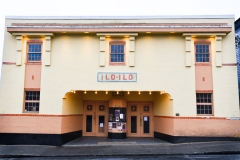
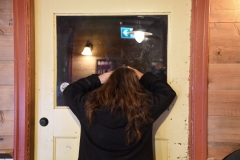
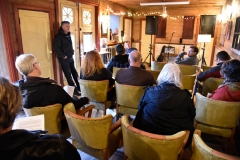

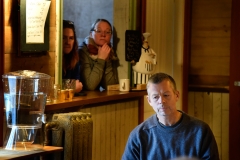
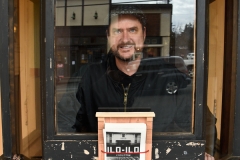

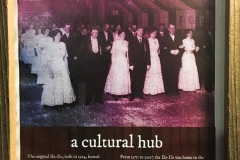
Trackbacks/Pingbacks